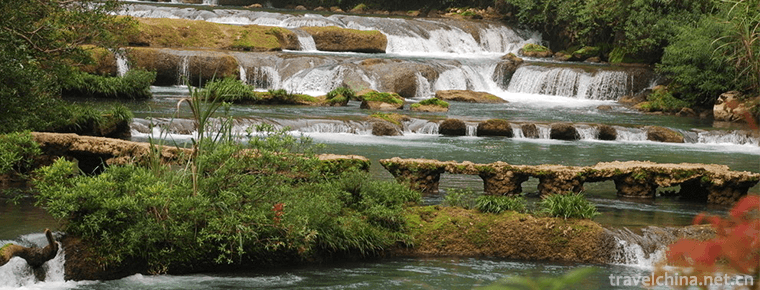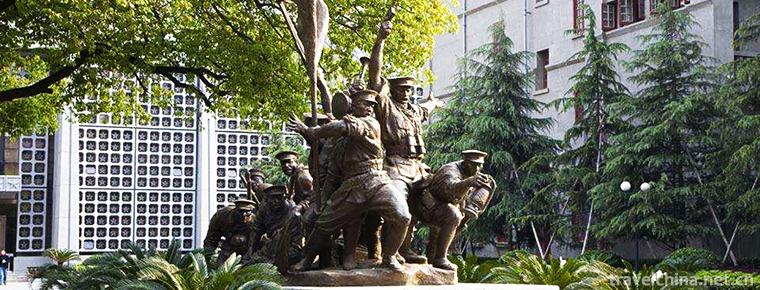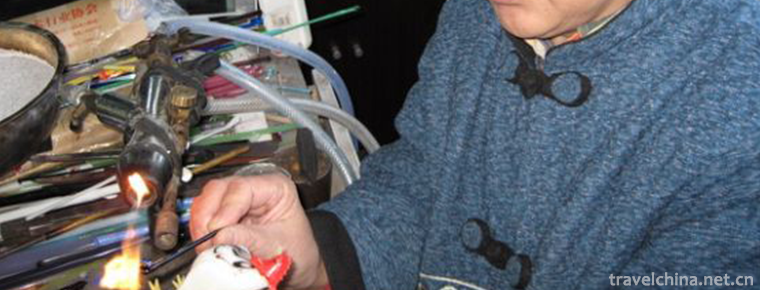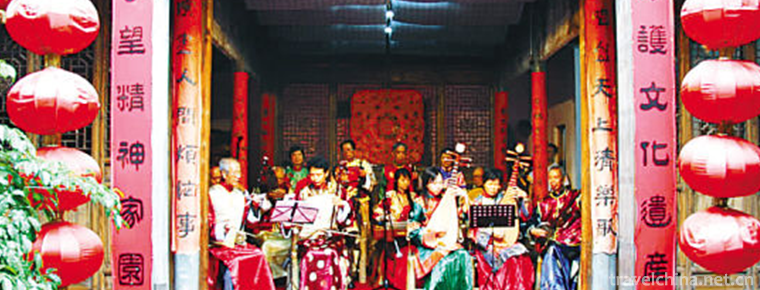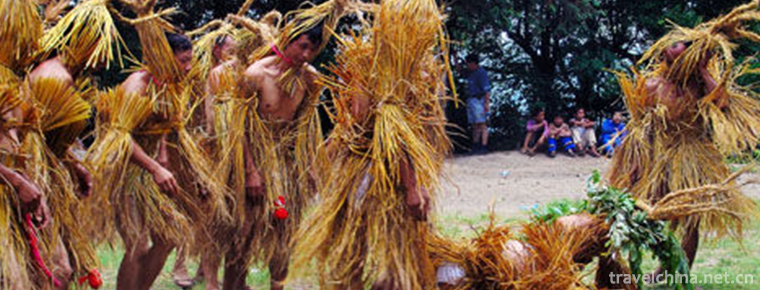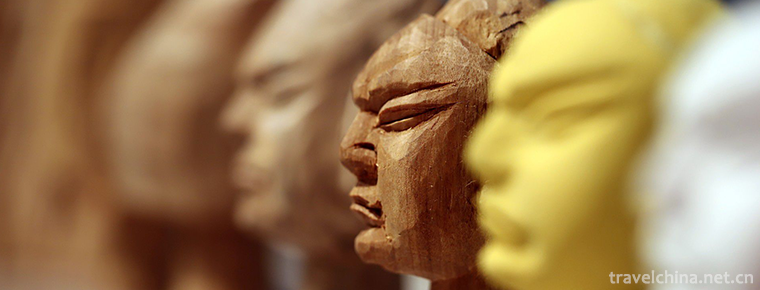Engraving Printing Skills
Engraving Printing Skills
Engraving printing technology, Yangzhou City, Jiangsu Province, local traditional handicraft, one of the national intangible cultural heritage.
Carving, catalpa line, engraving and so on are the skills of reverse engraving words and images on the board, then brushing ink on the board and laying paper under pressure, so that the pictures and text on the plate can be transferred to paper. This technique has higher aesthetic requirements in writing and design. The key of engraving is to control the speed and direction of the knife, especially the sticking, knitting and folding skills. The whole process exudes a simple and elegant cultural atmosphere.
On May 20, 2006, the woodblock printing technology was listed in the first batch of national intangible cultural heritage list by the State Council of the People's Republic of China. The number of the heritage is_-78.
historical origin
Engraving printing began in Sui Dynasty and went on in Tang Dynasty. Excellent in the Song Dynasty, prosperous in the Ming and Qing Dynasties. On this basis, Bi Sheng invented movable type printing in Song Dynasty, but block printing was not completely replaced by movable type printing, which still occupied an important position in ancient Chinese printing industry.
Printed objects in the Sui Dynasty have not yet been circulated. The earliest surviving printed matter is the "Draconian Sutra" unearthed from the tomb of the Tang Dynasty in Xi'an. The Diamond Sutra, produced in the Dunhuang Tibetan Sutra Cave, was engraved in 868 A.D. (the Ninth Year of Xiantong, Tang Dynasty). Yuan Zhen, a poet of the Tang Dynasty, wrote a preface to Bai Juyi's poems. He talked about Bai Juyi's poems being widely spread through "Mole". From the literature at that time, Yangzhou block printing flourished in Tang Dynasty.
During the Five Dynasties and Ten Kingdoms, the printing area expanded and the variety increased. The most prominent thing was that the government began to organize and print Confucian classics in Guozijian.
In the Song Dynasty, printing flourished in China. At that time, Yangzhou was at the forefront of the military confrontation between the north and the south, with constant wars and a lack of social environment for stereotyped books. The woodblock printing of Yangzhou in Song Dynasty was not commensurate with its status.
In the Yuan Dynasty, the economy and culture had not been restored, and the war started again, and the Yangzhou Engraving Society only continued sporadically.
In Ming Dynasty, with the gradual recovery of economy and culture, block printing also developed. By the middle and late Ming Dynasty, the official and private engraving industry had developed greatly. Shen Kuo's Mengxi Literary Talk, presided over by Professor Tang Xiunian of Yangzhou Prefecture School, became the ancestor of various publications of the book.
In the Qing Dynasty, the development of Yangzhou block printing was at its peak. Official engraving, square engraving and family engraving stand in great numbers, engraving work is spread all over the country, and the engraving industry is flourishing unprecedentedly in China.
Book Title area. The scale of Yangzhou official inscriptions in the Qing Dynasty was much larger than that of the previous dynasties. In the Qing Dynasty, a professional printing agency was set up to concentrate human and financial resources on printing. The successive establishment of Yangzhou Poetry Bureau, Yangzhou Bookstore and Huainan Bookstore and their brilliant achievements have also played a tremendous role in stimulating and promoting Yangzhou block printing.
In the Qing Dynasty, Yangzhou scriptures were engraved in the north of the Yangzhou River. The Buddhist scriptures were engraved in the brick bridge method of Jiangdu (founded in the fifth year of Tongzhi reign of the Qing Dynasty). They were carefully proofread and neatly engraved. They were sold at home and abroad. They were called "brick bridge engravings" in the academic circles. The number of printed scriptures is more than 1000 volumes.
In 1958, the carving artists scattered around Yangzhou concentrated in Yangzhou, engaged in the repair of stereotypes, and carved a part of the new version. In order to keep this ancient engraving process from being lost, Guangling Engraving Press was established in that year to undertake the collection, collection, collation and protection of ancient plates, and to organize and publish ancient books. Since 1962, more than 200,000 ancient editions of Jiangsu, Zhejiang and Anhui have been collected for unified renovation and protection. The Cultural Revolution was interrupted. In 1978, it was restored and renamed as Guangling Ancient Books Engraving Press of Jiangsu Province, and in 1999 it was renamed as Guangling Books Press.
Process characteristics
Wood with fine texture, uniform texture, easy processing and abundant resources must be selected for the materials used in engraving and printing. In order to obtain local materials, pear and jujube wood are mostly used in northern engraving, while poplar and catalpa wood are mostly used in southern engraving.
The ink used in engraving printing is also more distinctive, mostly using pine smoke and other raw materials, secret recipe preparation, so fragrance overflowing, never fade.
The tools used in engraving and printing are mainly carving knives and spade knives, which have various shapes and sizes. Carving different sizes of text and different parts of the text, we have to choose different carving knives.
Engraving printing technology has higher aesthetic requirements for writing and layout design. Engraving is the key technology to determine the quality and artistry of printing materials. It needs to control the speed and direction of knife movement, especially sticking, weaving and folding. The Guangling Ancient Books Engraving and Printing Agency in Yangzhou, China, still maintains a complete set of ancient books engraving and printing process, which has more than 20 processes. The whole process exudes a simple and elegant cultural atmosphere.
The inheritance mode of engraving printing technology can be divided into official carving, square carving and family carving according to the organizational form, and the inheritance characteristics are different. The inheritance of Yangzhou block printing technology can be divided into these three forms, but the inheritance is more orderly and the performance is more unique. Official inscriptions in Yangzhou are characterized by their high specifications, large scale, long duration, far-reaching influence and fruitful results. For the main purpose of making profits, the printer employs relatively stable engraving and printing artists to concentrate on engraving books in the bookstore, and gradually forms a unique style of engraving in a bookshop or a school of engraving in a certain area. Home-printed books account for the majority, and the most exquisite ones. Official engraving, square engraving and family engraving have played an important role in the dissemination and inheritance of Yangzhou engraving and printing technology, and also provided a broad space for the inheritance of engraving and printing technology.
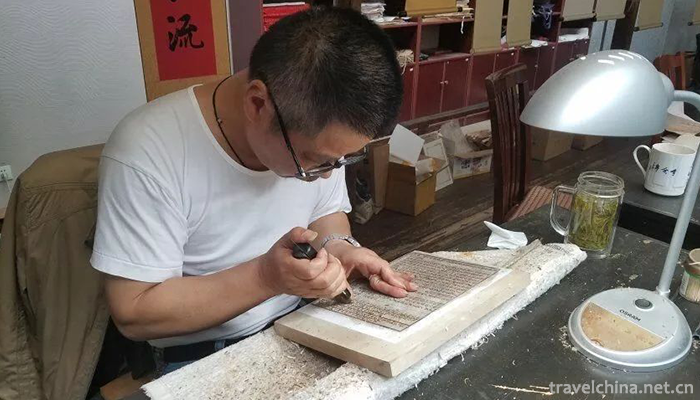
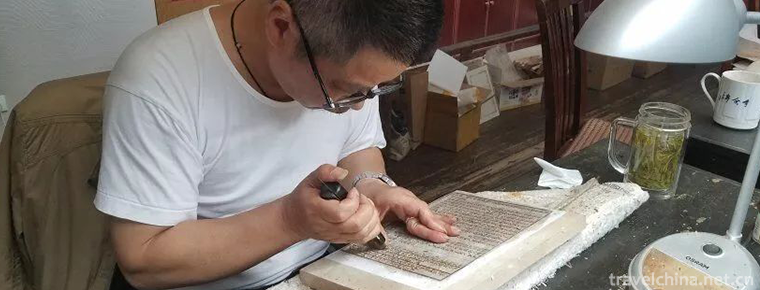
Engraving Printing Skills
-
Lugu Lake
Lugu Lake, commonly known as Zuozuohai, the ancient name Lede Sea
Views: 141 Time 2018-10-17 -
Libo Zhangjiang Scenic Spot
Libo Zhangjiang Scenic Spot is located in Libo County, Buyi and Miao Autonomous Prefecture, Guizhou Province, with a total area of 118.8 square kilometers. It is composed of big and small Qikong sceni
Views: 204 Time 2018-12-12 -
Mandarin Oriental Pudong Shanghai
Mandarin Oriental Hotel Group is an international hotel investment and management group. It owns top luxury hotels and resorts all over the world.
Views: 577 Time 2018-12-16 -
Bayi Memorial Hall in Nanchang
The Bayiyi Memorial Hall in Nanchang was established in 1956 and officially opened to the outside world on October 1, 1959. In 1961, it was announced by the State Council as the first batch of key nat
Views: 186 Time 2018-12-31 -
Fuzhou Arts
Fuzhou jiuyi, also known as jingyi, belongs to one of the five traditional local songs in Fujian Province, which mainly focus on singing, and is popular in Fuzhou dialect area
Views: 423 Time 2019-04-29 -
Material liao qi
Material wares are traditional handicraft products in Beijing. It is a traditional handicraft made of glass strips. There was no direct glass-making industry in Beijing. The materials used were collec
Views: 138 Time 2019-05-13 -
Tune in the sea
Linhai Ci Tune, also known as Taizhou Ci Tune, Talent Ci Tune and Xianhe Tune, is developed from Nanci, Kunqu and Taizhou local folk minor. It is one of the folk songs of Taizhou, Zhejiang Province. I
Views: 265 Time 2019-05-13 -
Maogus Dance of Tujia Nationality in Western Hunan
Maogus Dance of Tujia Nationality in Western Hunan Province, the traditional dance of Tujia and Miao Autonomous Prefecture in Western Hunan Province, is one of the national intangible cultural heritag
Views: 214 Time 2019-07-06 -
Zhangzhou Puppet Head Sculpture
Zhangzhou puppet head carving is a traditional folk arts and crafts in Zhangzhou City, Fujian Province. It belongs to a special skill in the production of puppet stage props. Zhangzhou puppet head car
Views: 141 Time 2019-07-25 -
Introduction to Chengdu Giant Panda Base
Chengdu Giant Panda Breeding and research base (hereinafter referred to as the base) is located at 1375, Waibei panda Avenue, Chenghua District, Chengdu City, Sichuan Province, China. It is 10 kilometers away from the city center and more than 30 kilometers
Views: 237 Time 2020-12-13 -
Geographical environment of Guangyuan
Guangyuan City is located in the north of Sichuan Province. Its geographical coordinates are 31 ° 31 ′ n to 32 ° 56 ′ N and 104 ° 36 ′ e to 106 ° 45 ′ E. in the north, it borders Wudu County, Wen County, Ningqiang County and Nanzheng County of Shaanxi
Views: 133 Time 2020-12-15 -
Leshan social security
By the end of 2018, there were 652700 employees participating in the basic endowment insurance for enterprise employees in Leshan, an increase of 27000 over the end of the previous year. 1.2567 million people participated in the endowment insurance for urban
Views: 337 Time 2020-12-17

